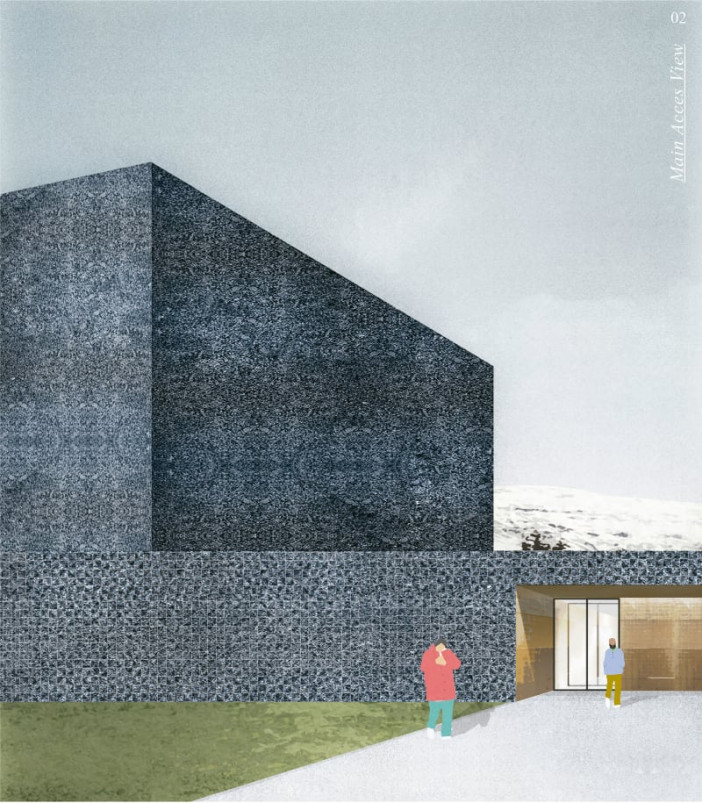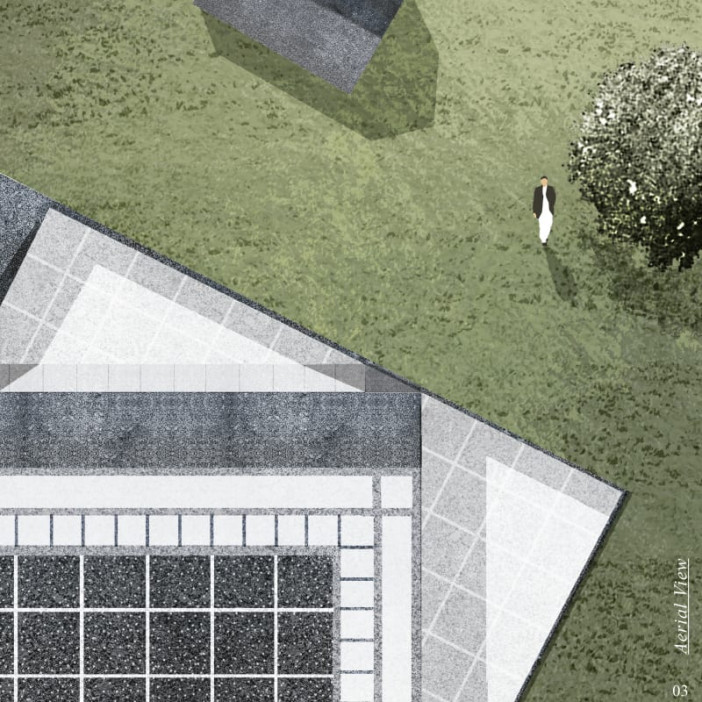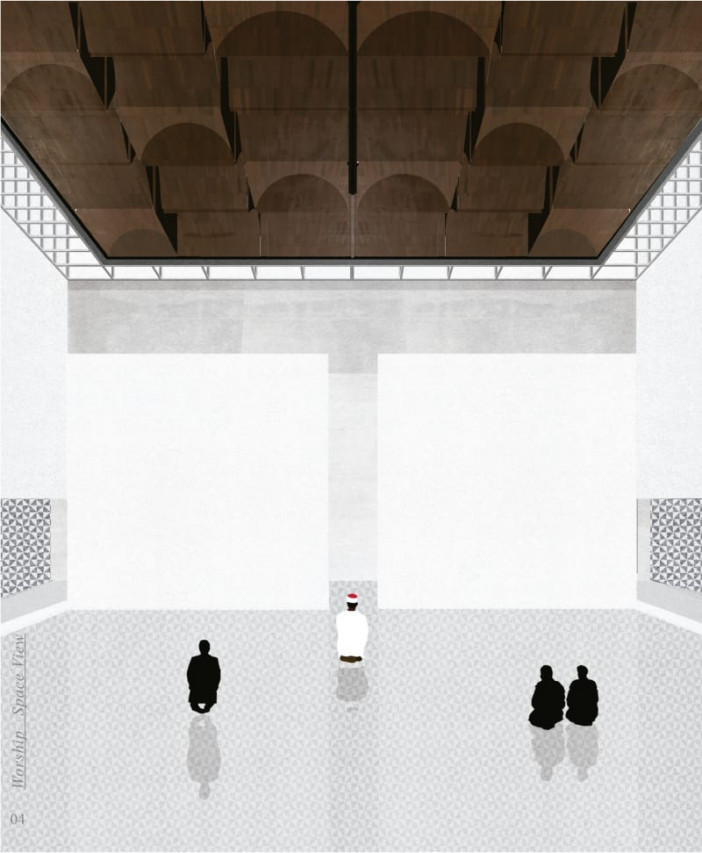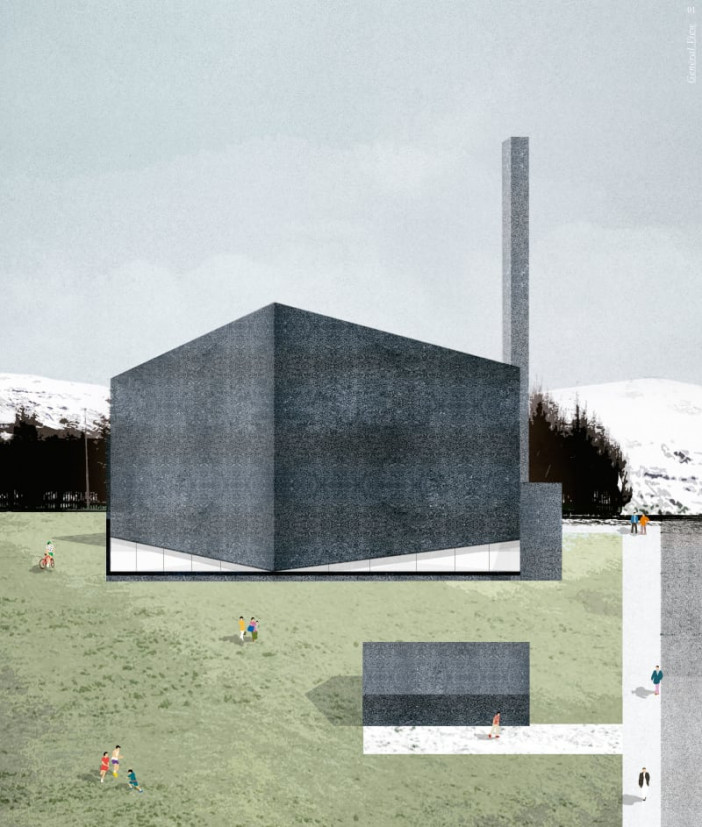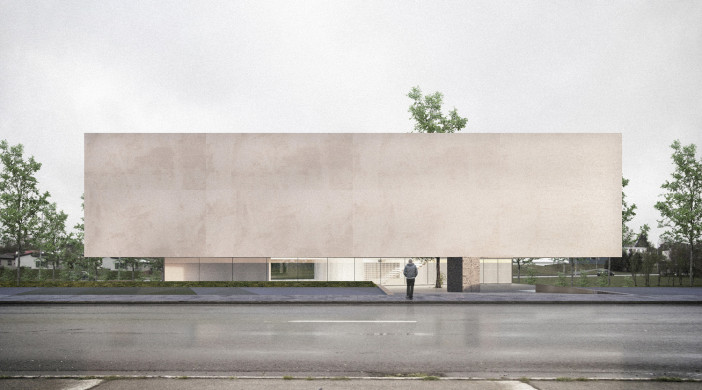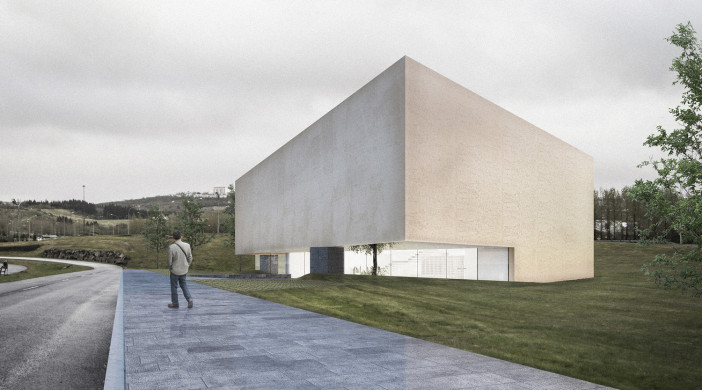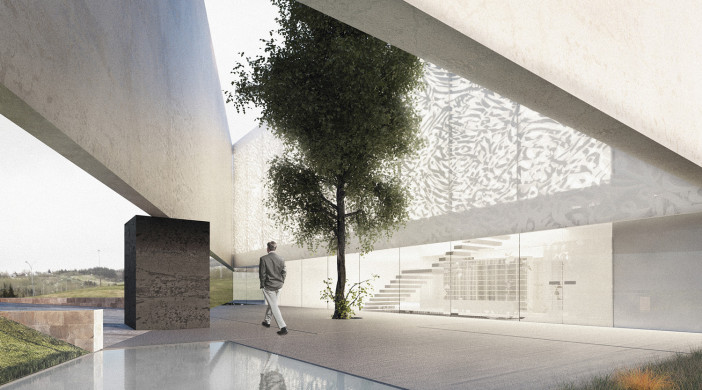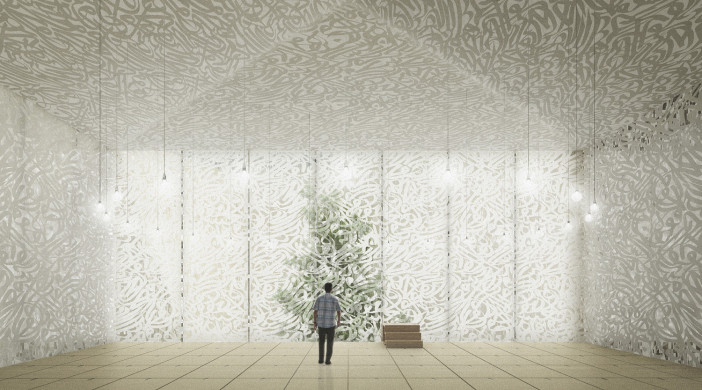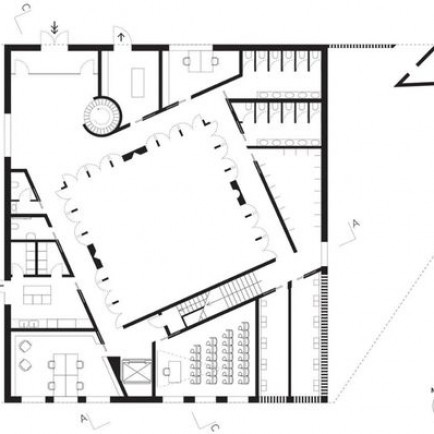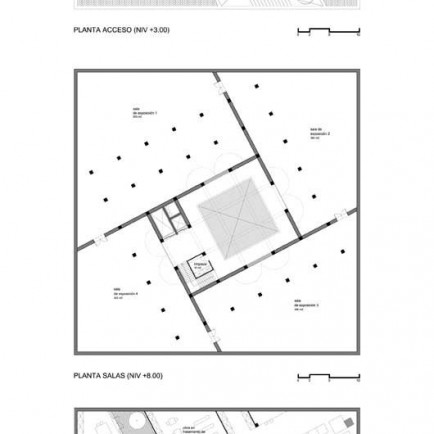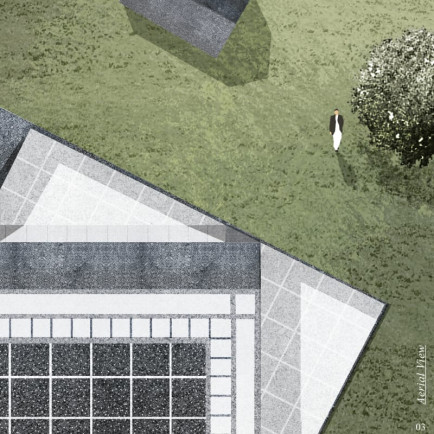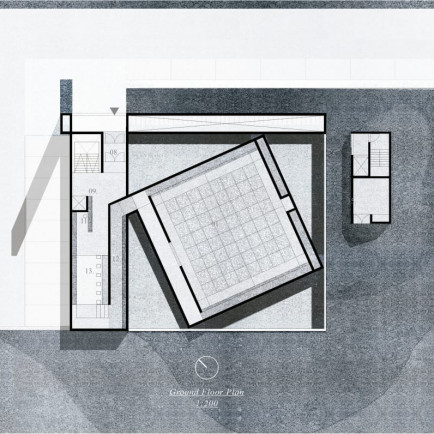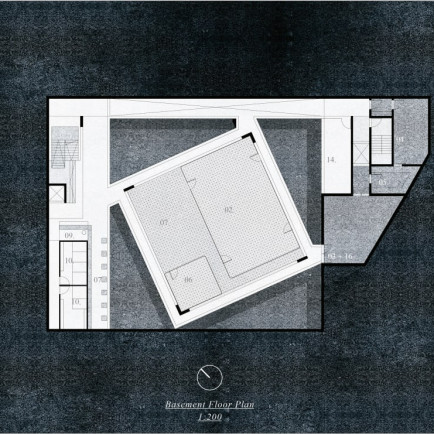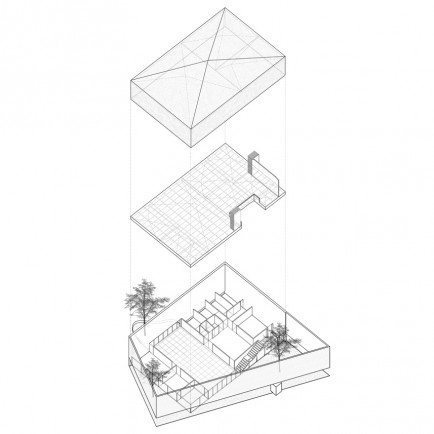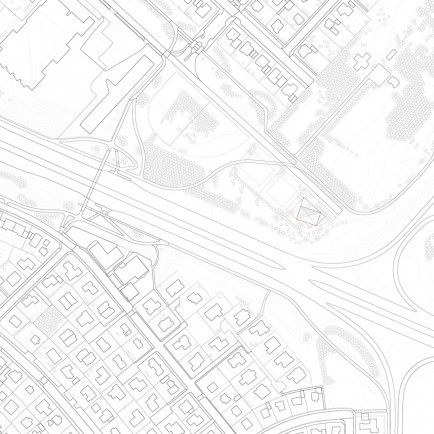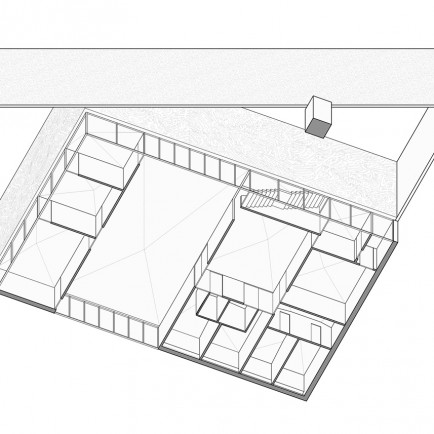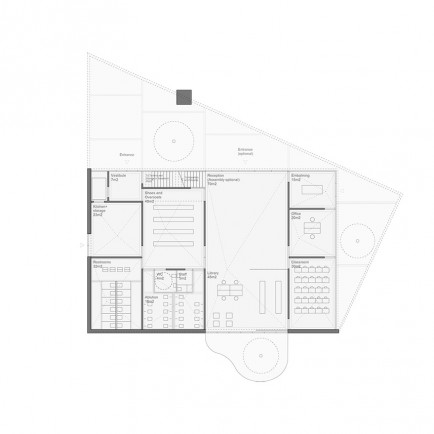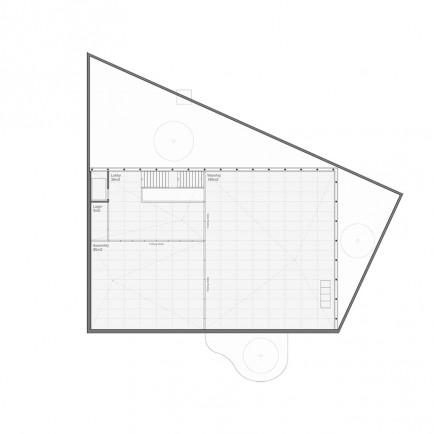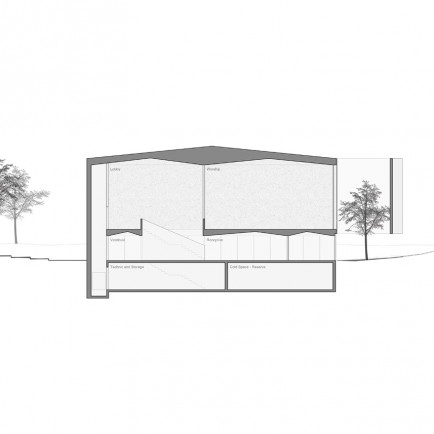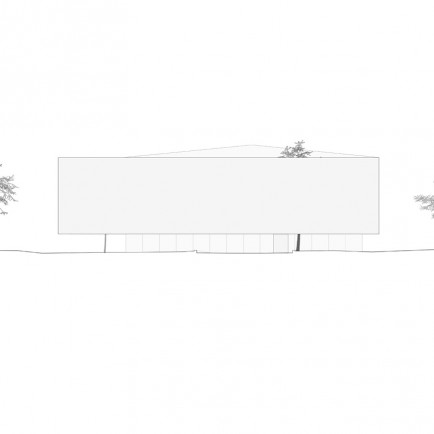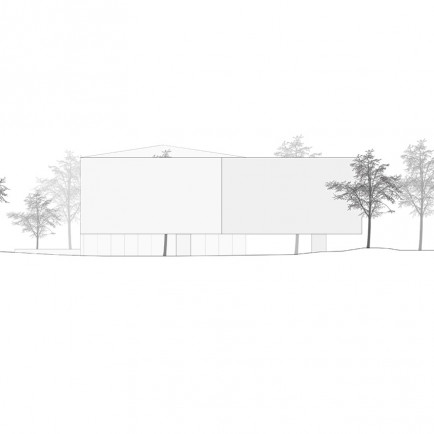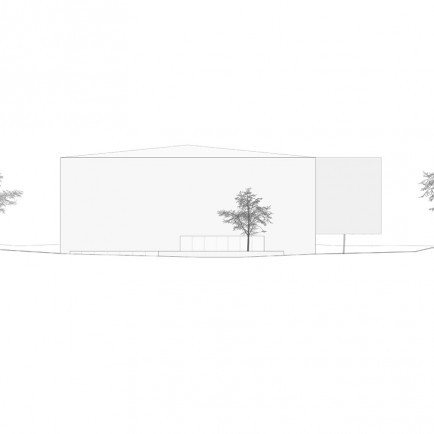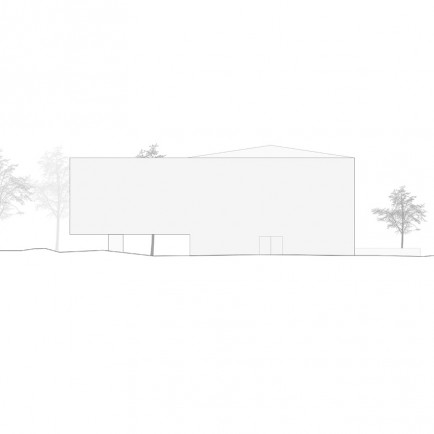Mosque in Reykjavik
Urban and Architectural
Design Goals
to
create a special space for worshipping, where concentration, isolation and
approach to god take place
Landscape Features
a landscape situated between the inner shell and outer shell of the building along with trees and reflective pools which combines visually to look like blurred boundaries between the building and its surrounding nature.
Building Features
the
building could be seen as an unpolished geode stone in a garden as it consists
of two shells as the following: an outer shell that looks like a geode stone
formation giving the hint that something curious is happening in the interior
as this shell follows the street and site layout, as well as an inner shell
that follows the qibla direction (mecca) and looks like a place that is filled
with gems inside.
Interior
Entrance is accessible through a triangular-shaped garden
that is enclosed by a hovering concrete wall, opens towards the sky, moving to
the garden where the building opens up and welcomes guests with many
aesthetical views from inside the mosque, as well as a view to the inner facade
that holds a huge Islamic calligraphic pattern.
a
series of dynamic spaces with varying sizes guide the visitor's journey through the
building, from arrival to the worship area filled with calm feeling and
peaceful atmosphere. shoe storage and cloakroom connected to the ablution
facilities and restrooms along with an open bright area holds a welcoming
reception next to the cloakroom which could be opened to the entrance garden
from a side, while it looks merged with the library from the other side.
The reception is linked directly to classrooms, embalming
facilities and offices. An open stair leads from the reception to the upper
floor, leading to a space with a ceiling height of six to seven meters, filled
with indirect soft sunlight through a large translucent glass façade. From
there users can access to the auditorium and the worship area which can be
joined into one large space.
the qibla wall is slightly more transparent than the other walls
on the upper floor to let in an indirect light into the prayer hall with a tree
creating a focal point outside the window.
Materials and ornaments
the building has several layers of material used.
the outer shell is made of raw concrete, mat and rough on the outside but
smooth and polished on the inside of the atrium gardens. a large polished cube
of cut basalt supports the cantilevering concrete shell. the inner shell is
divided into two different layers; an upper and lower floor. the lower floor is
made of generic materials with clear glazed facades facing the two triangular
gardens. the upper floor is covered with decorated mat glass panels on walls
and ceilings. the north facade has translucent glass while the qibla wall on
the east side has semi-transparent glass to emphasize the importance of the
direction towards mecca.
the glass panels cover all walls and ceilings on the upper floor. they have a mat finish, painted white on the back, with an islamic calligraphic pattern sandblasted on top. the result is a minimalist and modern take on interior ornaments of traditional mosques. the qibla wall has a mat, semi-transparent finish with a sandblasted pattern on top, which allows indirect light to flow through and creates dynamic light patterns on the floor.
Description
Proposed
project to be done on a green field in the center of the city Reykjavic the
capital of Iceland - Europe Region
the building will be surrounded by fields of grass and trees which can be seen as a garden pavilion as architects planned to build it on a strategic spot between the two popular outdoor areas: laugardalur and elliðaárdalur.
Architect: VIAR ESTUDIO |then trípólí studio
Details
الرسومات المعمارية
الخريطة
Urban and Architectural
Design Goals
to
create a special space for worshipping, where concentration, isolation and
approach to god take place
Landscape Features
a landscape situated between the inner shell and outer shell of the building along with trees and reflective pools which combines visually to look like blurred boundaries between the building and its surrounding nature.
Building Features
the
building could be seen as an unpolished geode stone in a garden as it consists
of two shells as the following: an outer shell that looks like a geode stone
formation giving the hint that something curious is happening in the interior
as this shell follows the street and site layout, as well as an inner shell
that follows the qibla direction (mecca) and looks like a place that is filled
with gems inside.
Interior
Entrance is accessible through a triangular-shaped garden
that is enclosed by a hovering concrete wall, opens towards the sky, moving to
the garden where the building opens up and welcomes guests with many
aesthetical views from inside the mosque, as well as a view to the inner facade
that holds a huge Islamic calligraphic pattern.
a
series of dynamic spaces with varying sizes guide the visitor's journey through the
building, from arrival to the worship area filled with calm feeling and
peaceful atmosphere. shoe storage and cloakroom connected to the ablution
facilities and restrooms along with an open bright area holds a welcoming
reception next to the cloakroom which could be opened to the entrance garden
from a side, while it looks merged with the library from the other side.
The reception is linked directly to classrooms, embalming
facilities and offices. An open stair leads from the reception to the upper
floor, leading to a space with a ceiling height of six to seven meters, filled
with indirect soft sunlight through a large translucent glass façade. From
there users can access to the auditorium and the worship area which can be
joined into one large space.
the qibla wall is slightly more transparent than the other walls
on the upper floor to let in an indirect light into the prayer hall with a tree
creating a focal point outside the window.
Materials and ornaments
the building has several layers of material used.
the outer shell is made of raw concrete, mat and rough on the outside but
smooth and polished on the inside of the atrium gardens. a large polished cube
of cut basalt supports the cantilevering concrete shell. the inner shell is
divided into two different layers; an upper and lower floor. the lower floor is
made of generic materials with clear glazed facades facing the two triangular
gardens. the upper floor is covered with decorated mat glass panels on walls
and ceilings. the north facade has translucent glass while the qibla wall on
the east side has semi-transparent glass to emphasize the importance of the
direction towards mecca.
the glass panels cover all walls and ceilings on the upper floor. they have a mat finish, painted white on the back, with an islamic calligraphic pattern sandblasted on top. the result is a minimalist and modern take on interior ornaments of traditional mosques. the qibla wall has a mat, semi-transparent finish with a sandblasted pattern on top, which allows indirect light to flow through and creates dynamic light patterns on the floor.
Description
Proposed
project to be done on a green field in the center of the city Reykjavic the
capital of Iceland - Europe Region
the building will be surrounded by fields of grass and trees which can be seen as a garden pavilion as architects planned to build it on a strategic spot between the two popular outdoor areas: laugardalur and elliðaárdalur.
Architect: VIAR ESTUDIO |then trípólí studio


